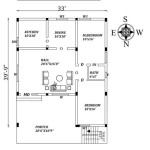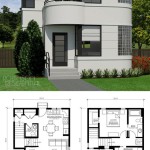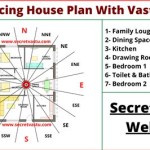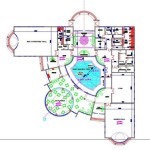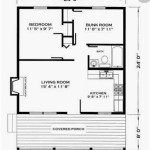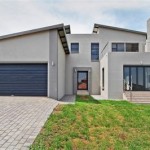Example of Floor Plan with Measurements in Meters: A Comprehensive Guide
Floor plans are fundamental tools in architecture, interior design, and real estate. They provide a scaled visual representation of a building or space from a bird's-eye view, showcasing the arrangement of rooms, walls, doors, windows, and other structural features. A crucial aspect of any floor plan is the inclusion of accurate measurements, typically expressed in a standardized unit, such as meters. This article will provide a detailed example of a floor plan incorporating measurements in meters, examining its key features and explaining how to interpret the information presented within.
This example will focus on a hypothetical two-bedroom apartment, designed with relatively open-plan living areas. The dimensions provided will be in meters, and we will explore how these measurements are used to determine the overall size of the apartment and the individual room sizes. Understanding how to read and interpret a floor plan with metric measurements is essential for anyone involved in designing, constructing, renovating, or purchasing property.
Key Point 1: Understanding the Components of a Floor Plan
Before diving into the specific example, it is important to understand the general components of a floor plan. A standard floor plan generally includes the following:
Walls: Represented by thick lines, indicating the boundaries of rooms and the exterior of the building. The thickness of the lines can sometimes be used to indicate the type of wall (e.g., load-bearing versus non-load-bearing).
Doors: Shown as an arc or a break in the wall, indicating the swing direction of the door. The width of the door opening is typically indicated.
Windows: Depicted as lines within the wall, showing the width and sometimes the height of the window opening. Window styles can be indicated using different symbols.
Rooms: Labeled with their intended use (e.g., living room, bedroom, kitchen, bathroom). The area of each room is often specified in square meters (m²).
Fixtures and Appliances: Major fixtures and appliances, such as toilets, sinks, bathtubs, kitchen counters, and major appliances (refrigerators, stoves, washing machines), are typically shown to provide a sense of scale and layout.
Measurements: Linear dimensions indicating the length and width of rooms, walls, and other features. These measurements are crucial for understanding the size and proportions of the space.
Scale: A ratio indicating the relationship between the dimensions on the drawing and the actual dimensions of the building. For instance, a scale of 1:100 means that 1 centimeter on the drawing represents 100 centimeters (1 meter) in reality.
Example Floor Plan: Two-Bedroom Apartment (Measurements in Meters)
Let's consider a floor plan for a two-bedroom apartment. Imagine the following dimensions and layout:
Overall Apartment Size: 10 meters (width) x 12 meters (length) = 120 m²
Entrance Hall: Located near the main entrance, measuring 1.5 meters x 2 meters = 3 m². Leading directly into the living area.
Living Area: An open-plan space combined with the dining area and kitchen. The total dimensions of this combined space are 5 meters x 6 meters = 30 m². This allows for flexible furniture arrangement.
Kitchen Area: A designated section within the open-plan living area, featuring a counter length of 3 meters and a width of 2 meters, totaling 6 m². The layout includes space for a refrigerator, stove, and sink.
Dining Area: Integrated within the open-plan living space, allocated an area of approximately 2 meters x 3 meters = 6 m². This provides adequate space for a dining table and chairs.
Master Bedroom: Measuring 4 meters x 4 meters = 16 m². This includes space for a queen-sized bed, bedside tables, and a wardrobe. The master bedroom also features an en-suite bathroom.
En-Suite Bathroom (Master): Accessible from the master bedroom, measuring 1.5 meters x 2 meters = 3 m². It includes a toilet, sink, and shower stall.
Second Bedroom: Measuring 3 meters x 3.5 meters = 10.5 m². Suitable for a single bed, desk, and wardrobe.
Main Bathroom: Accessible from the hallway, measuring 2 meters x 2.5 meters = 5 m². It includes a toilet, sink, and bathtub.
Balcony: Accessed from the living area through sliding doors, measuring 1 meter x 4 meters = 4 m². This provides an outdoor space for relaxation.
Hallway: Connecting the bedrooms, bathrooms, and living area, measuring 1 meter wide and approximately 8 meters long = 8 m².
The measurements listed above allow for a clear understanding of the space allocation within the apartment. The total area of the rooms, excluding the balcony, adds up to 84.5 m². When combined with the open-plan living area (30m²) and the hallway (8m²) it totals 122.5m², a figure that's reasonably close accounting the difference in the thickness of the walls and possible small discrepancies in estimated areas. The balcony adds an additional 4 m² of outdoor space.
Key Point 2: Interpreting and Using Floor Plan Measurements
Once a floor plan with measurements is available, the information can be used in various ways:
Space Planning: Using the measurements to determine if furniture will fit comfortably in each room and to plan the layout of the space. This involves considering the dimensions of furniture and appliances and ensuring adequate circulation space.
Estimating Material Requirements: Calculating the amount of flooring, paint, wallpaper, tiles, and other materials needed for renovation or construction projects. Accurate measurements are crucial for avoiding waste and ensuring sufficient materials are available.
Cost Estimation: Determining the cost of renovation or construction projects based on the area to be covered or the amount of materials required. This involves obtaining quotes from contractors and suppliers and calculating the total project cost.
Property Valuation: Assessing the value of a property based on its size and layout. Real estate agents and appraisers use floor plans and measurements to compare properties and determine their market value.
Communication with Contractors: Providing clear and accurate information to contractors and tradespeople to ensure that work is carried out according to the design specifications. Floor plans serve as a visual guide and reference point for all parties involved in the project.
In the given example, the dimensions of the master bedroom are sufficient for fitting a queen-sized bed, bedside tables, and a wardrobe. The open-plan living area allows for flexible furniture arrangement and is suitable for entertaining. The second bedroom, although smaller, is still adequate for a single occupant. The presence of two bathrooms is a desirable feature in a two-bedroom apartment.
Key Point 3: Practical Considerations and Further Applications
When interpreting floor plans with measurements, several practical considerations should be taken into account:
Wall Thickness: The thickness of walls can affect the actual usable space within a room. Floor plans typically show the internal dimensions of rooms, but it is important to consider the wall thickness when planning furniture layout or estimating material requirements.
Door and Window Placement: The location of doors and windows can impact the flow of traffic within a room and the placement of furniture. Consider the swing direction of doors and the amount of light provided by windows when planning the layout.
Ceiling Height: Floor plans do not typically show ceiling height, but this is an important factor to consider, especially when planning for tall furniture or lighting fixtures. Standard ceiling height is usually around 2.4 meters, but this can vary.
Accessibility: Consider the accessibility of the space for people with disabilities. Ensure that doorways are wide enough for wheelchair access and that there is sufficient space for maneuverability within rooms and hallways.
Building Codes and Regulations: Ensure that the floor plan complies with all relevant building codes and regulations, including requirements for fire safety, ventilation, and accessibility.
Beyond the applications already mentioned, floor plans with measurements are also used for:
Emergency Planning: Evacuation routes and fire safety equipment locations are often indicated on floor plans for emergency preparedness.
Facility Management: Managing and maintaining buildings, including tracking assets, planning maintenance schedules, and managing space utilization.
Virtual Reality and 3D Modeling: Creating virtual tours and 3D models of buildings for marketing or design purposes.
In summary, floor plans with measurements in meters are essential tools for understanding and managing space. The example provided illustrates how measurements are used to determine room sizes, plan furniture layouts, and estimate material requirements. By understanding the components of a floor plan and how to interpret the information it contains, individuals can make informed decisions about design, construction, and property management.

12 Examples Of Floor Plans With Dimensions

A Floorplan Of Single Family House All Dimensions In Meters Scientific Diagram

Floor Plan With Measurements

Floor Plans With Dimensions Including Examples Cedreo

12 Examples Of Floor Plans With Dimensions

Floor Plans With Dimensions Including Examples Cedreo
Overview Measurements On Floor Plans Roomsketcher Help Center

Floor Plans With Dimensions Including Examples Cedreo
Overview Measurements On Floor Plans Roomsketcher Help Center

The Ground Floor Of House Layout And Dimensions In Cm Scientific Diagram


